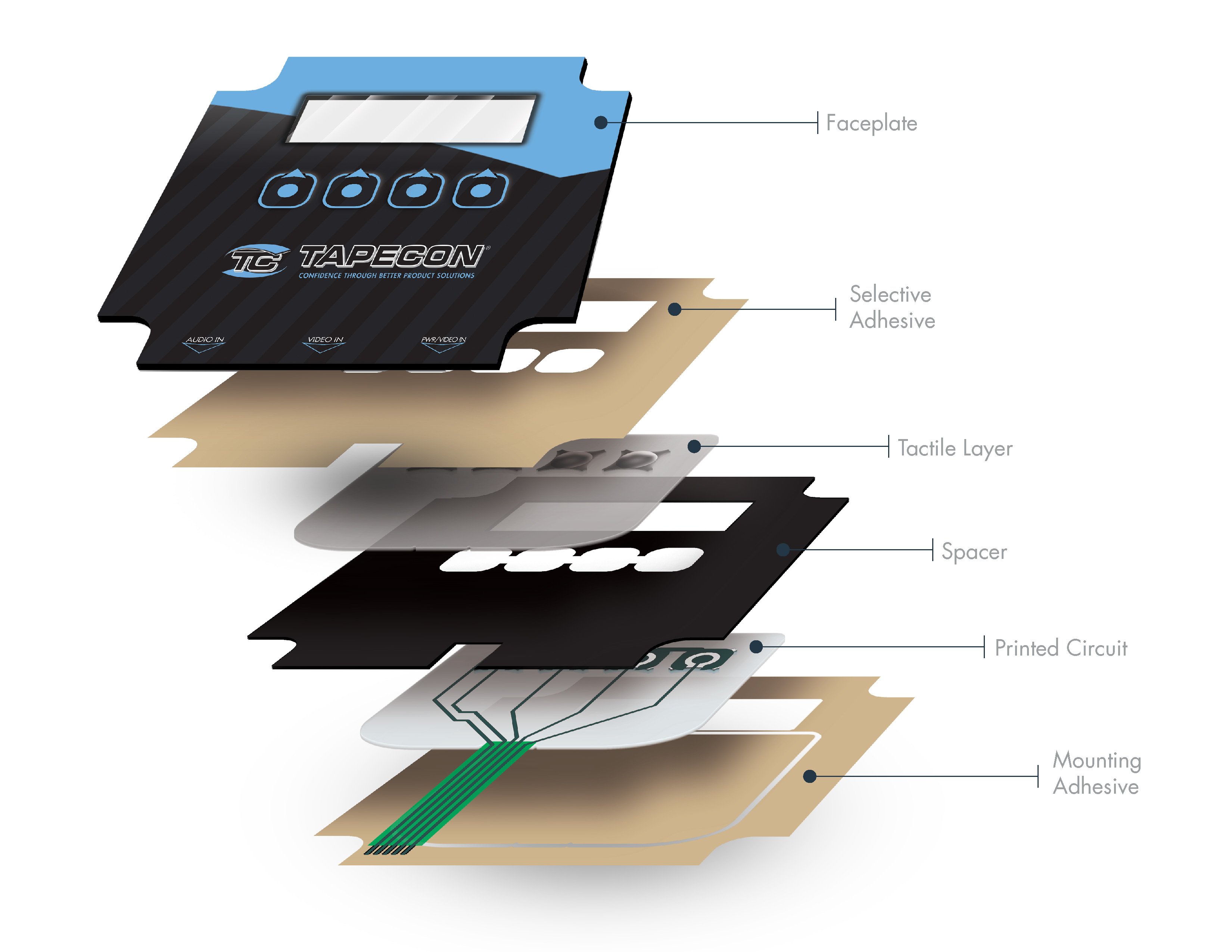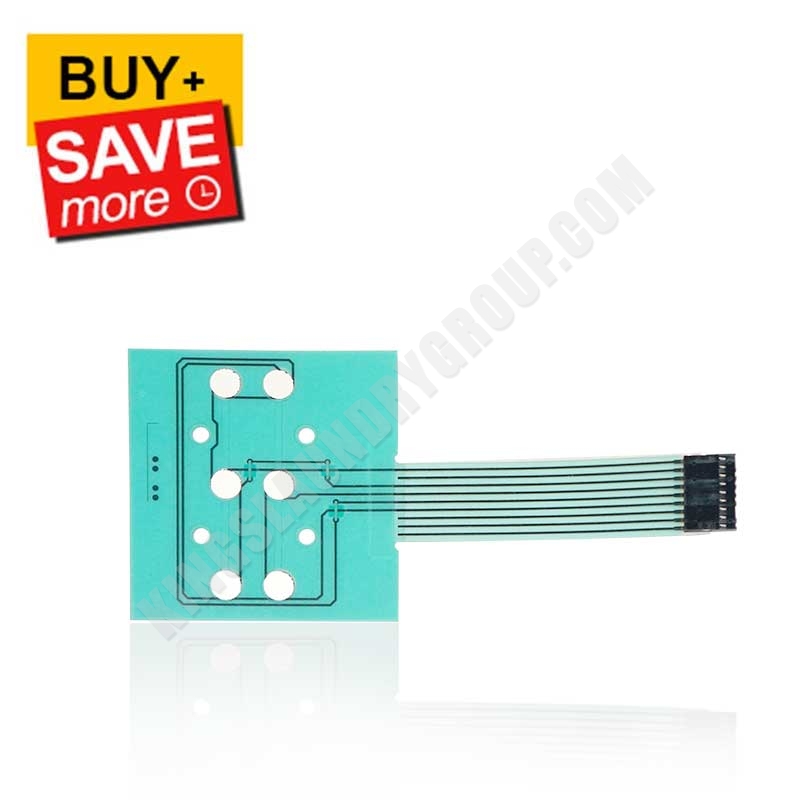The Total Guide to Membrane Switch Modern Technology and Its Applications
The Total Guide to Membrane Switch Modern Technology and Its Applications
Blog Article
Understanding the Capability of Membrane Layer Switches Over for Interface Gadget
The capability of membrane layer changes stands for a considerable development in customer interface layout, incorporating efficiency with aesthetic flexibility. These switches operate via a multi-layered structure that converts user communications into electric signals, allowing for both portable formats and durability versus ecological aspects. As industries progressively focus on individual experience, understanding the subtleties of membrane button modern technology becomes necessary. What implications do these developments hold for future applications, and exactly how might they redefine individual communications throughout numerous devices?
What Are Membrane Buttons?
Membrane layer buttons are ingenious user interface tools that help with user communication with digital tools. These versatile elements contain several layers, including a graphic overlay, spacer, and a printed circuit layer. The style permits for a seamless assimilation right into different electronic devices, boosting both the aesthetic and functional facets of user interfaces.
Membrane buttons are commonly utilized in a vast array of applications, from house devices to industrial equipment and medical tools. Their building and construction usually features a slim profile, making them an ideal choice for portable designs. The tactile responses provided by these switches can be crafted to fulfill certain user preferences, making sure efficient communication in between the user and the tool.
Longevity is another substantial advantage of membrane buttons, as they are resistant to dust, moisture, and chemicals, which enhances their lifespan sought after settings. Additionally, these buttons can be tailored in terms of shape, dimension, and graphic style, permitting for branding and user-specific features. In general, membrane layer switches stand for a functional option for improving user experience in digital devices, integrating performance with aesthetic appeal in an effective manner.
Exactly How Membrane Layer Switches Over Job
Operating on a simple principle, membrane switches use a layered building and construction to sign up user input effectively. Each button is composed of numerous layers, including a published circuit layer, a spacer layer, and a leading graphic layer, which are designed to function together effortlessly. When an individual presses the top layer, it compresses the spacer layer, bringing the conductive elements of the circuit layer right into call with each various other.
This call develops a closed circuit, signaling the device to implement a specific function. The layout enables various arrangements, consisting of tactile feedback, which can boost the user experience by offering a physical feeling upon activation. The materials utilized in membrane buttons frequently consist of flexible substrates, such as polyester or polycarbonate, which make sure sturdiness and resilience against deterioration.

Key Advantages of Membrane Layer Switches

An additional considerable advantage is their compactness. Membrane layer switches are slim and lightweight, which allows makers to save space in their devices without sacrificing performance. This attribute is especially helpful in applications where weight and volume are crucial considerations.
Furthermore, membrane buttons are resistant to dust, moisture, and chemicals, boosting their resilience. This durability prolongs their lifespan and minimizes the demand for constant substitutes, resulting in price financial savings in time.
Moreover, the responsive responses supplied by membrane buttons can be optimized to enhance user interaction. They can include functions such as elevated buttons or audible clicks, boosting use and individual experience.
Applications Throughout Industries
Customer user interface devices utilizing membrane layer buttons prevail in a wide selection of markets, showcasing their versatility and functionality. Membrane Switch. In the medical industry, membrane layer buttons are essential to tools such as analysis equipment and client monitoring systems, where their toughness and convenience of cleaning are essential for keeping health standards. In the auto industry, these buttons are utilized in control panel controls and infomercial systems, supplying a streamlined my company and modern-day interface for users.
Moreover, Visit Your URL the consumer electronic devices field take advantage of membrane layer switches in home appliances and portable tools, where compact style and straightforward user interfaces boost user experience. Industrial applications likewise leverage membrane switches over for control board in equipment and automation systems, emphasizing their toughness and resistance to severe atmospheres.
In the aerospace and protection sectors, membrane layer switches are used in cockpit controls and tools, where reliability and efficiency under severe conditions are critical. Additionally, the gaming industry increasingly includes membrane buttons in controllers and gallery equipments, contributing to an appealing user experience. Overall, the convenience of membrane layer changes enables their widespread usage throughout countless fields, underscoring their relevance in modern-day individual interface design.
Future Trends in Membrane Layer Switch Over Innovation

In addition, using advanced products, such as polycarbonate and polyester films, is expected to increase, giving improved longevity and resistance to ecological stressors. These products add to the general durability of membrane layer switches, making them appropriate for harsher commercial applications.
Furthermore, the consolidation of clever innovation, consisting of IoT connectivity, will certainly make it possible for membrane layer switches to connect with other gadgets and systems, promoting a much more interactive individual experience. This fad aligns with the growing demand for clever tools across numerous markets, from healthcare to customer electronics.
Finally, modification alternatives are expected to broaden, enabling producers to produce bespoke services customized to particular individual demands and preferences. These growths will certainly place membrane layer switches as necessary elements in the development of interface innovation.
Final Thought
Finally, membrane layer switches represent an essential advancement in interface modern technology, supplying a dependable and functional option for varied electronic applications. Their layered building and construction assists in small design, while features such as tactile responses enhance individual communication. The sturdiness against environmental aspects even more strengthens their energy throughout several markets. As innovations in material science and touch sensing innovations proceed, the capability and applicability of membrane layer buttons are expected to expand, strengthening check that their importance in modern electronic tools.
Report this page